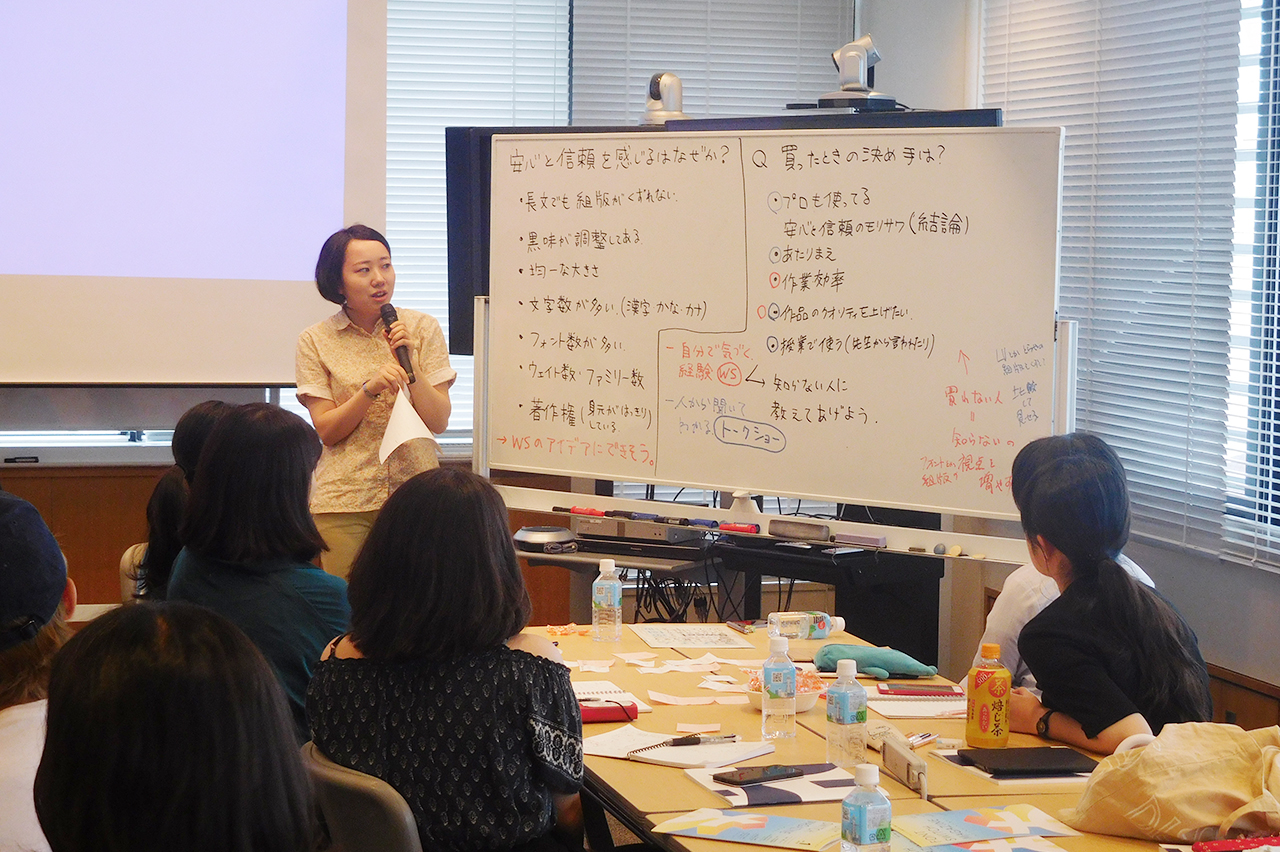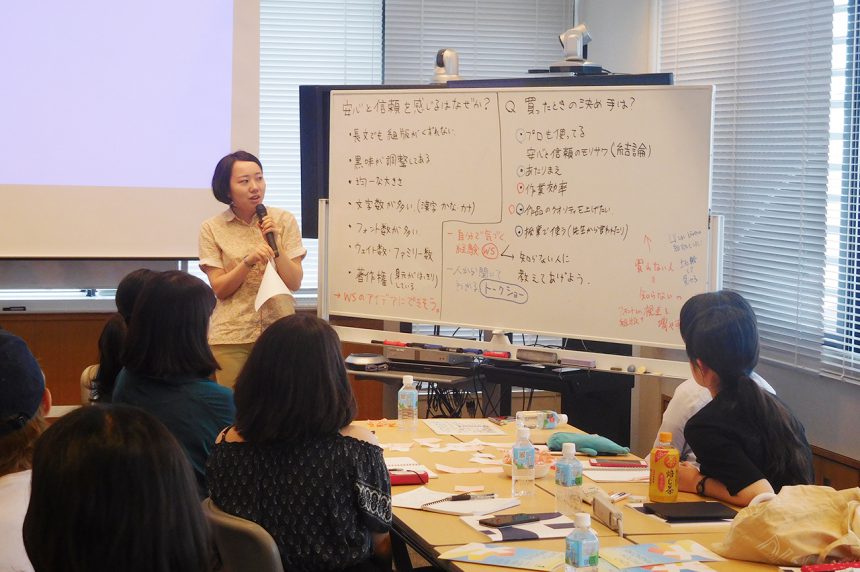
The fourth meeting of the Moripass Club, part of the second term, was held in July. The members split into two teams and began working on new challenges: event production and free magazine production. This report covers the first interim presentation from this meeting.
An event and free magazine that will turn your font senses on
For the second half of this term, the theme was "Turning the Sensibility of Fonts ON," and the team split into two teams: one to create a free magazine to be published on January 28th of next year, and the other to hold an event on the same day. Up until today, each team has met individually and been preparing for meetings and presentations.
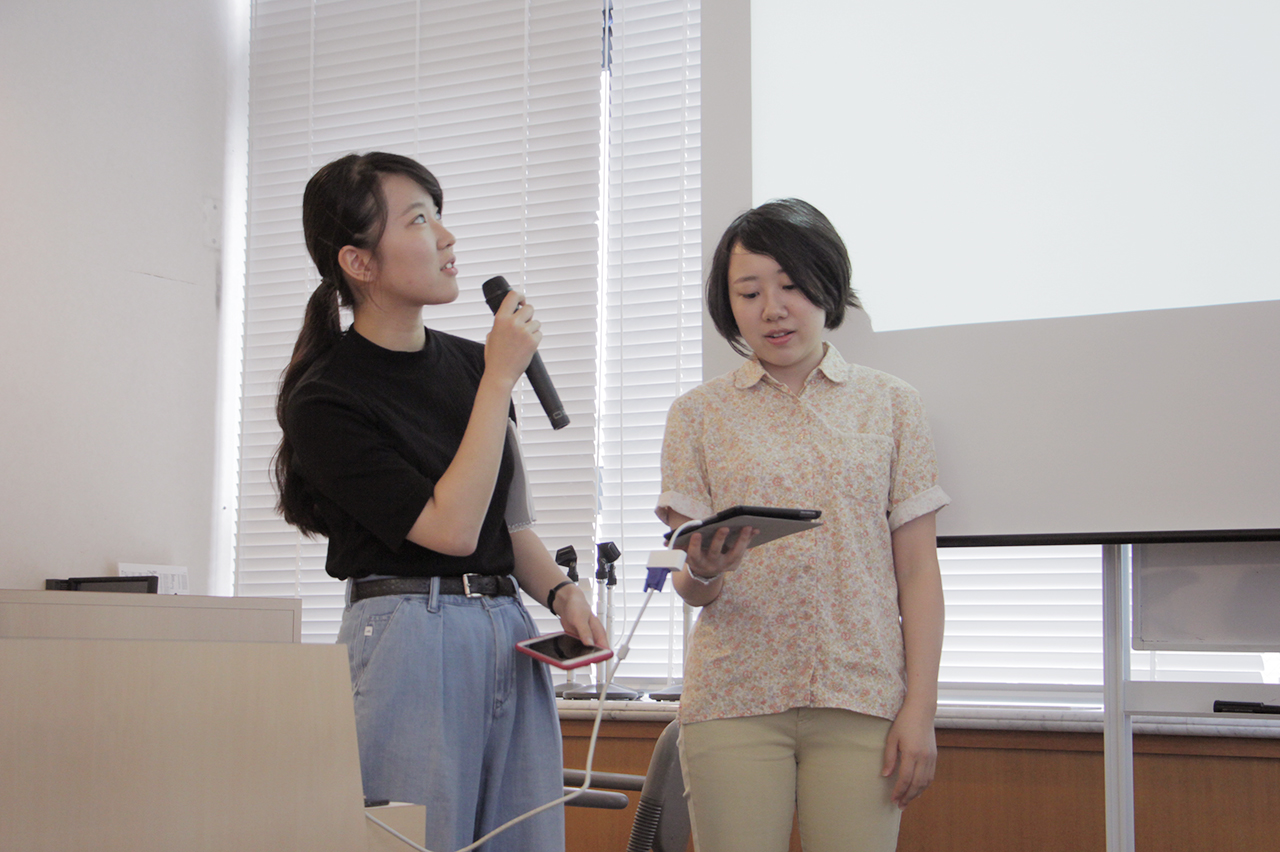
First, the event team gave an interim presentation. They divided the event into two categories: one for people with an interest in fonts and one for those without. They proposed two different content options: a talk show with designers and a fun workshop where they would hand out chocolates.
Advisor Hashizume then offered a comment on how to proceed with production, saying, "If you clearly define the goal and focus of the event from the beginning, it will be easier to decide on the content." He also offered some advice, saying, "You should be able to realize the event that the team wants if you think about how many people are interested in fonts, how many aren't, and if so, what specifically they're interested in."
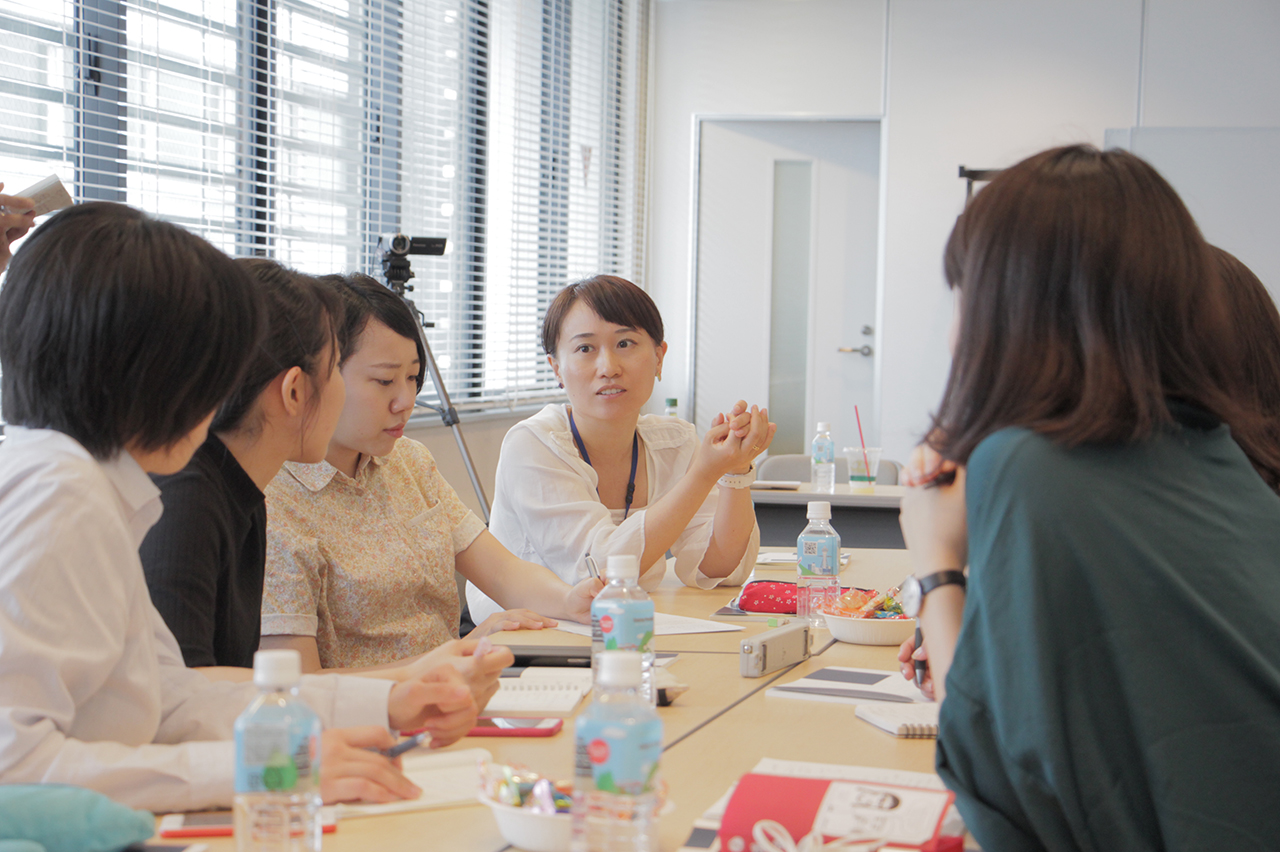
After hearing the feedback, the event team was apparently worried even before the announcement, saying, "There are still many things that need to be finalized."
Rather than deciding on the content first, we felt it was necessary to firmly establish a policy, such as "Why are we holding the event? Who do we want to attend? And what do we want those who attend to experience?"
What is important to consider before proceeding with production?
Next, the Free Magazine Team gave their mid-term presentation. Because they are a large group, it was difficult to hold a meeting where everyone could gather together, but they did read the free magazine they created last year and discussed their impressions.
The concept of the free magazine is "dried fish," meaning "different from real voices," and the editorial content has been announced as being more artistic than last year, with interviews and typesetting experiences.
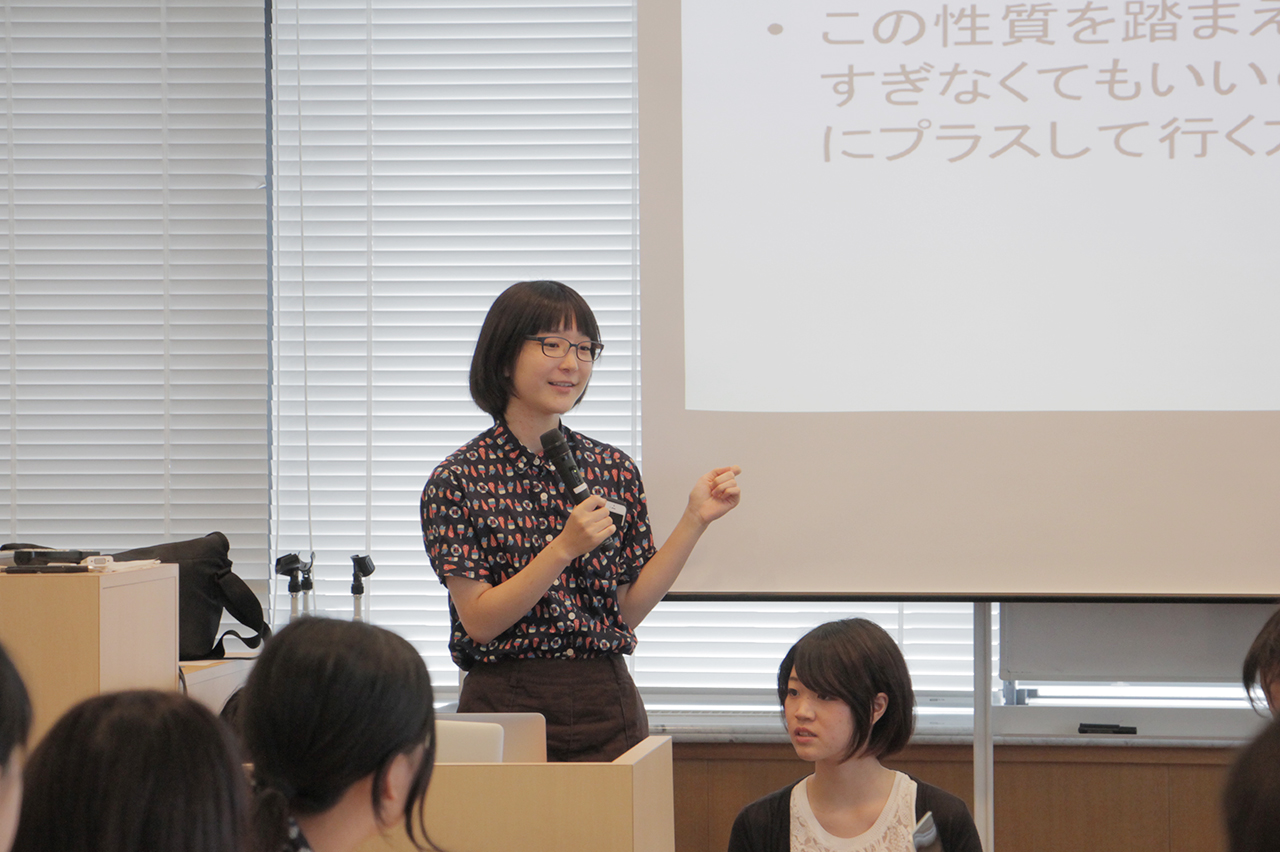
The advisor's feedback after listening to the presentation included, "What do you want the reader to feel after reading it?" and "I'd like you to make the concept of 'dried fish' a little easier to understand." This was also important advice to ensure the production's purpose and theme remained consistent.
Through their interim presentations, both teams realized that they still needed to have more discussions. Without a unified goal within the team, opinions and directions would gradually diverge, and production would not go smoothly.
To prevent this from happening, both teams next began working on clarifying any areas that needed to be refined, based on the feedback they received during their interim presentations.
Keeping your sights on the goal of your creation
The Free Magazine team first decided to clarify the definition of their concept, "dried fish," within the team.
Each participant wrote down on paper what they imagined when they thought of "dried fish," then pasted these on a whiteboard and categorized them. They also compiled images of living things that are the opposite of "dried fish," and by comparing and examining these images, the concept of "dried fish" became easier to understand.
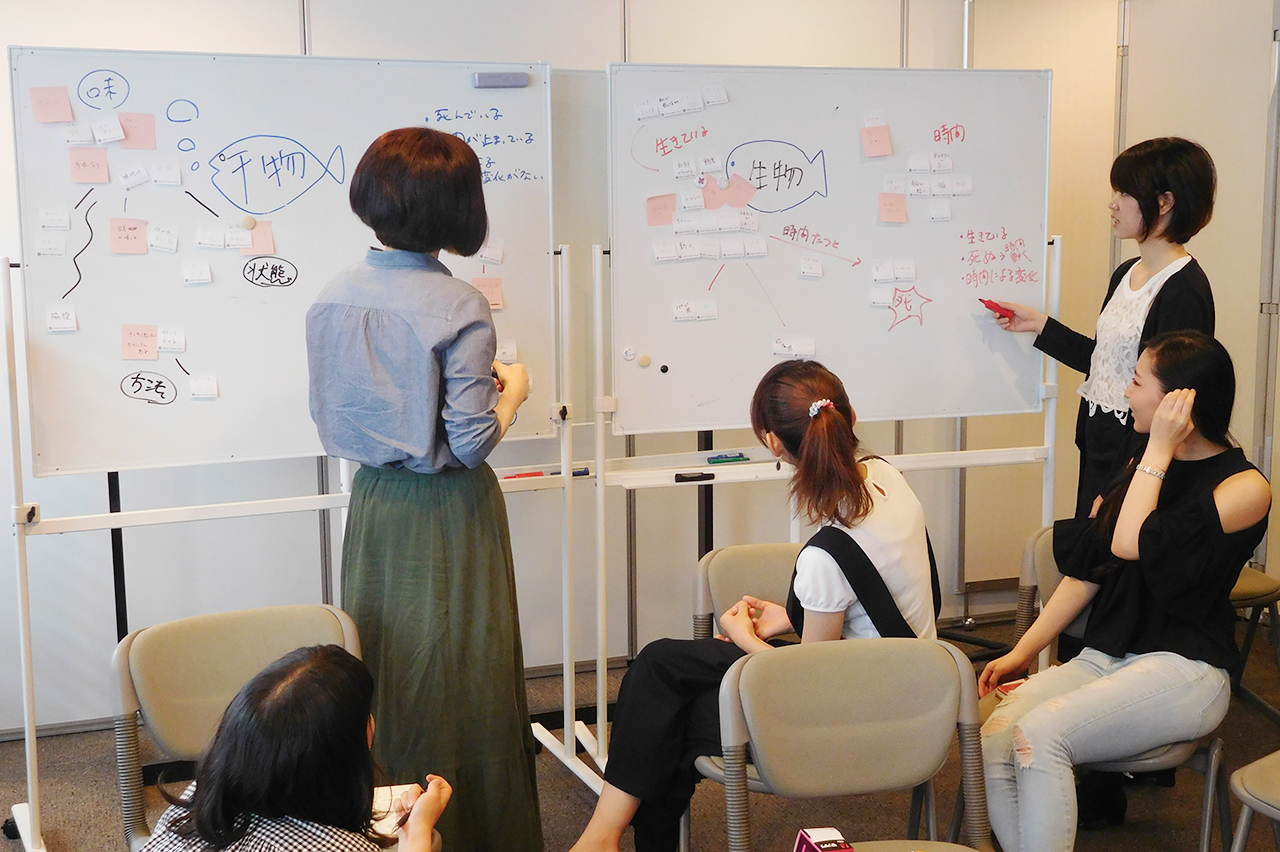
The team then focused on the "time axis" of "dried fish." "Living things are alive, but dried fish is dead. It changes over time," they said, "It would be great if we could communicate that!" Little by little, they seemed to be seeing a breakthrough.
"What about interviews with people who have won awards in the past?" "A parent-child conversation would be good," and so on. The concept of "dried fish" was what allowed us to come up with a series of unique and valuable perspectives when deciding the magazine's editorial policy.
The event team also assumed that the people they wanted to attend the event were art school students, and analyzed the interest and concern for fonts for each grade level, from first to fourth year.
To find out the reasons for this, they will look at their own experiences and the opinions of those around them, asking questions such as, "What are your friends at school like?", "I didn't feel like fonts were something close to me when I was in first grade," and "Why is there such a difference in interest between second and third graders?"
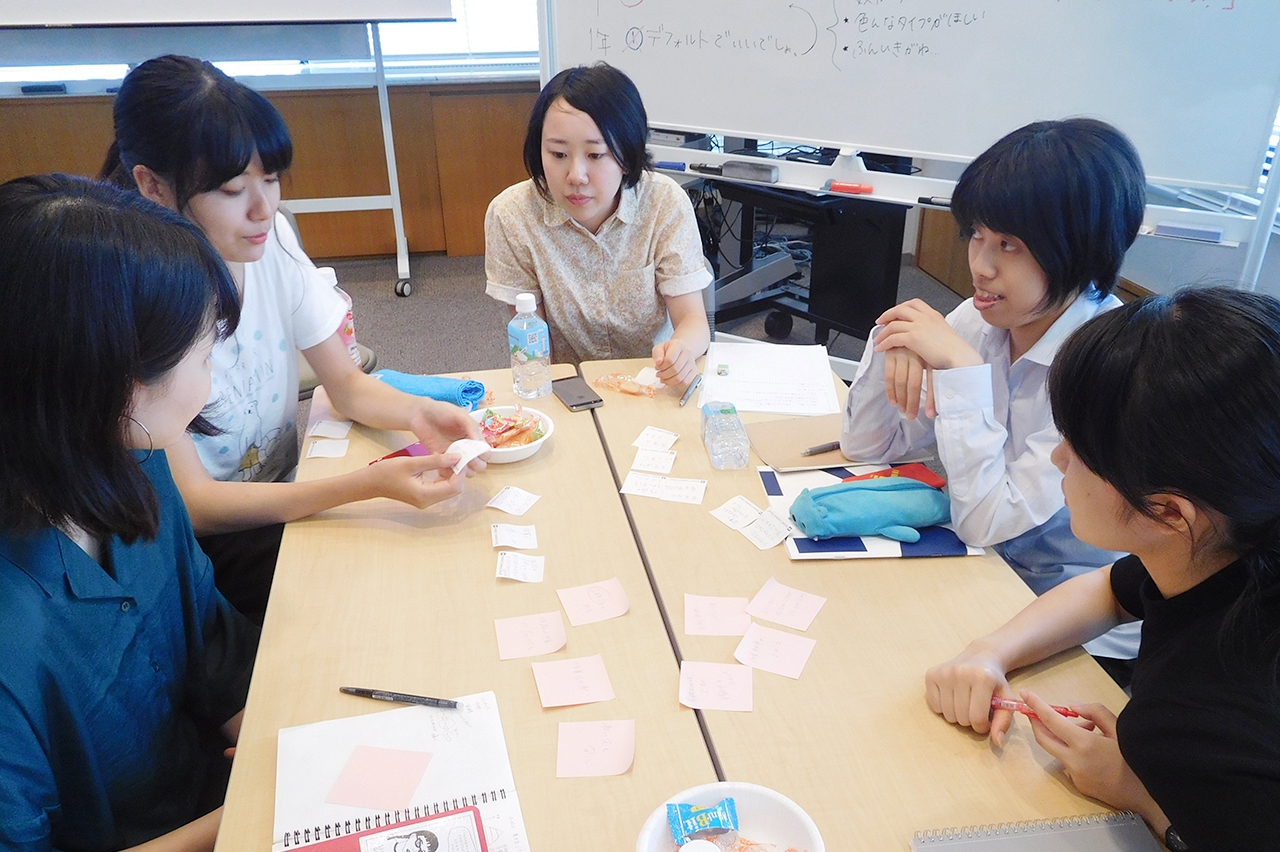
By carefully considering the theme, purpose, and reasons, we gradually began to see elements that could be incorporated into ideas for workshops and talk shows.
Both teams looked anxious at the time of their interim presentations, but after these team meetings, they suddenly became cheerful. They seemed to have gained confidence in their production, saying things like, "This is what I want to make," and "Maybe we can do that ourselves too."
Experience the difficulties and joys of working in a team
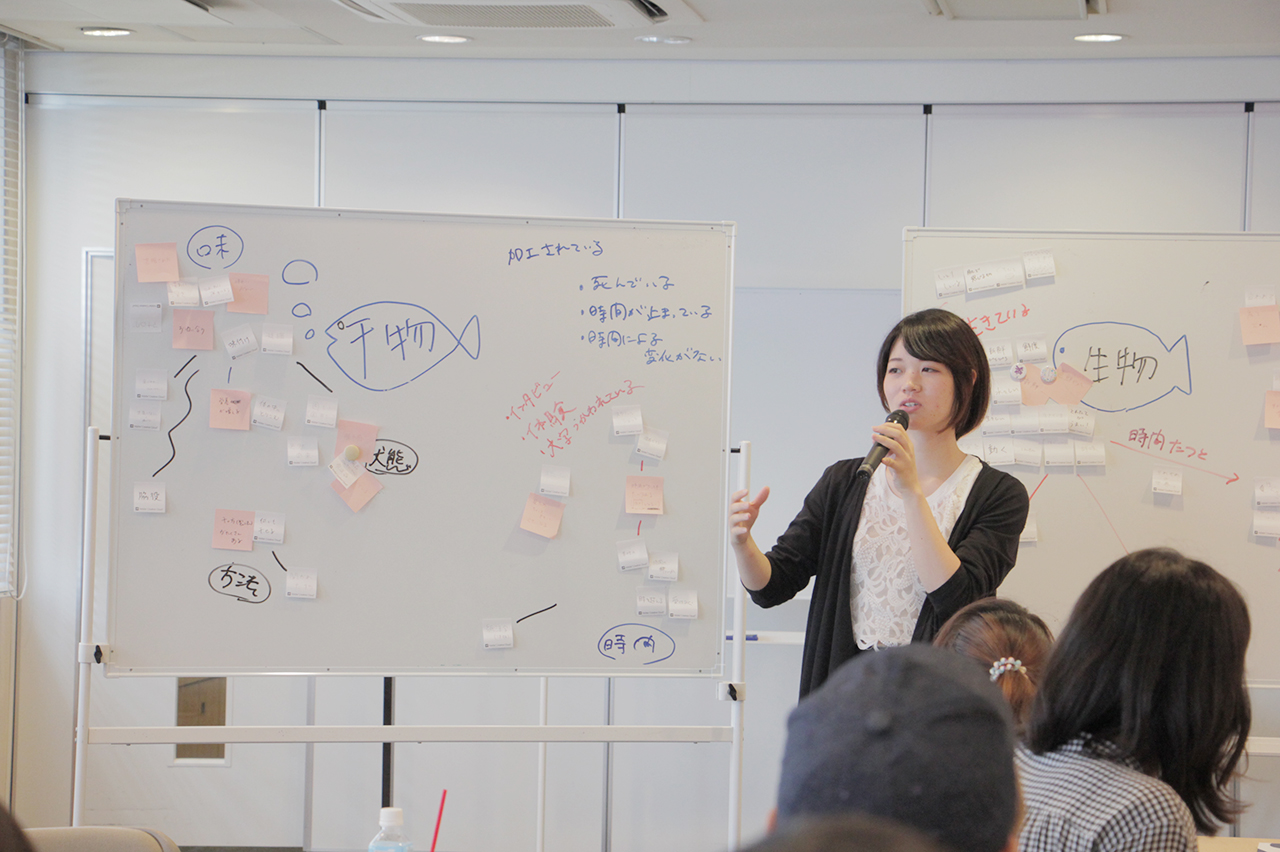
After a lengthy team meeting, each team again presented their results, production goals, and specific future activities.
By categorizing the purpose and theme of the production using mind maps, etc., each team will tackle new challenges that arise while creating specific schedules.
Until now, they had been thinking about it on their own and had been unsure about it, but with advice from their advisor, they were able to return to their original goal of "turning on the sensitivity of fonts" and gained new insights.
Unlike previous activities where students worked on tasks individually, the students found it difficult to exchange opinions within the team, but they also enjoyed learning through teamwork with colleagues who were working towards the same goal.
The next meeting will be in September, with another interim presentation. How will the new issues identified this time be addressed in the next two months? We will report on the steady progress of our members!

